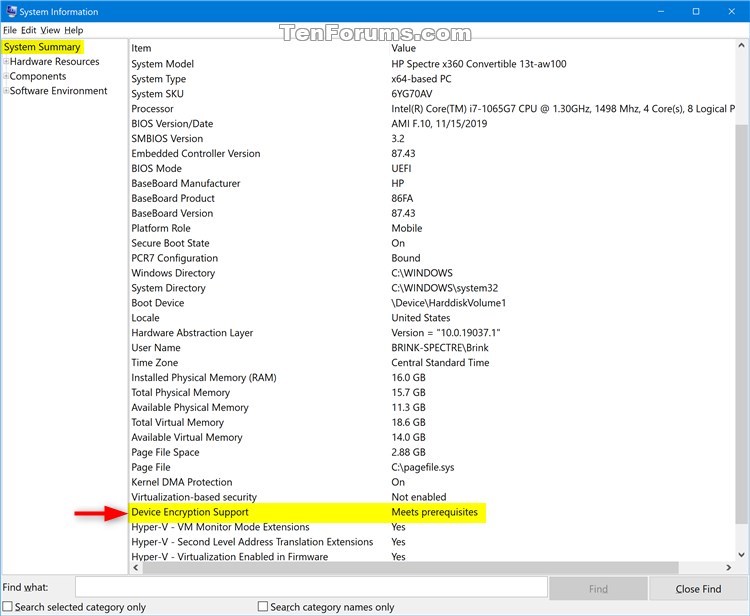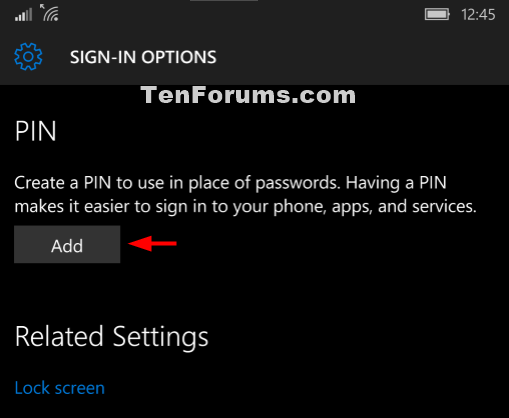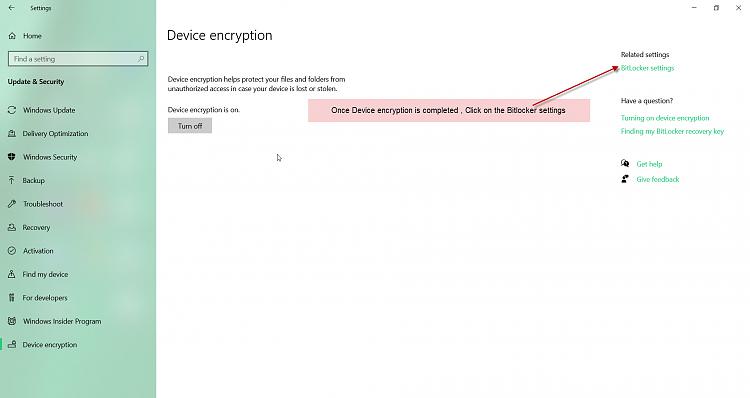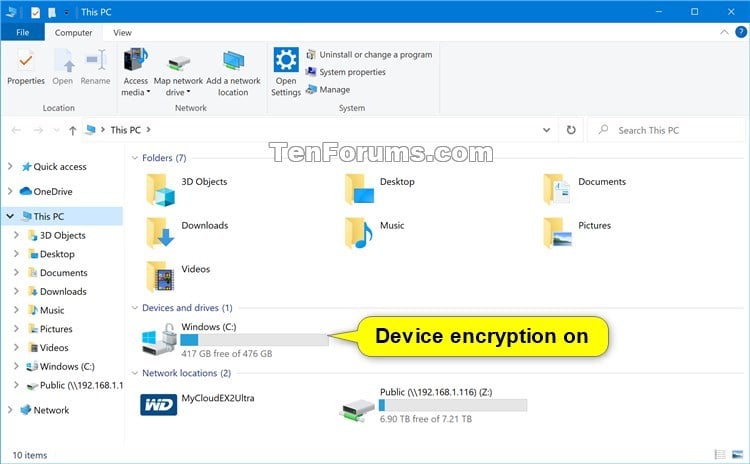Table of Content
Right-click on the file and select Properties. In the General tab, look for the Encryption option. In the drop-down menu, click the Change button. Choose the encryption type you would like to use. After that, you can restart your computer.

If you don’t have an external drive, then back up your files with an encrypted password before you use them. Well, BitLocker encryption and Device encryption are two encryption features available in Windows 10. While the BitLocker is present only in Pro and Enterprise editions, the Device encryption is available in all editions provided that your computer supports the feature. The BitLocker is an advanced and more secure encryption when compared to Device encryption. How to Check if Device Encryption is Supported in Windows 10 Device encryption helps protect your data, and it's available on a wide range of Windows devices. If you turn on device encryption, the data on your device can only be accessed by...
Windows 10 home device encryption without tpm free download.More resources
These are some of the affordable gadgets on my desk today. Under the "Advanced startup" section, click the Restart now button. Trusted Platform Module version 2 with support for Modern Standby.

Report this product Report this app to Microsoft Thanks for reporting your concern. Our team will review it and, if encrgpt, take action. In the Settings app, go to Update & Security and click on the Device Encryption option appearing on the left panel. If you don’t see the Device Encryption option, your computer is not supported. At the bottom of the System Summary window, look for the “Device Encryption Support” item. If the value says Meets prerequisites, then device encryption is available on your PC.
- Autodesk revit 2016 backup free download
While processing it prompts cannot encrypt folder windows 10 home free download exact percentage and completion status. Note that in decryption, you should give the same password that you given before in encryption time. Encrypt any file types including mp4, videos near to 20 MB free.
If you can get device encryption settings, then you have TMP Version 2.0 with support for modern standby. You can use this tool to encrypt any folder in Windows 10. Simply open the File Explorer, click the folder’s properties, and then click the Advanced button. Look for a key named “NTFSDisableEncryption” in the File System key. To make your file or folder completely encrypted, click OK. Along with Pro and Enterprise editions, you can enable device encryption on Windows 10 Home edition too.
Automatische Windows-Geräteverschlüsselung oder BitLocker auf Dell Computern
If you like, you can check the status of device decryption as wanted to see its current percentage decrypted. Mauro Huculak is technical writer for WindowsCentral.com. His primary focus is to write comprehensive how-tos to help users get the most out of Windows 10 and its many related technologies.

The Trusted Platform Module is a piece of hardware that is mostly integrated into the Motherboard. This little hardware is important for storing and protecting encryption keys when using features like device encryption and BitLocker. First, you need to check if the TPM is present on your device or not. How do I enable file encryption in Windows 10 is fairly simple. Simply open File Explorer and navigate to the file you wish to change the encryption status of.
Due to this app, they can just press a hotkey combination and all their drives are instantly encrypted using BitLocker. Device encryption uses XTS-AES 128-bit BitLocker encryption method and cipher strength by default in Windows 10. We're focusing this guide on Windows 10 Home users, but this option, as well as BitLocker, is also available for devices running Windows 10 Pro with supported hardware. Once you switch it On, device encryption will be activated, and your files will be secure. Impossible to know contents from the encrypted file manually источник статьи by software without knowing original password from the file owner. If it says Reasons for failed automatic device encryption then Device Encryption is not supported on your computer.
It stops malicious users from accessing system files and accessing your drive by connecting it a different computer. The Device encryption feature protects the drive where Windows 10 is installed and other fixed drives on the computer using AES 128-bit encryption. After you complete the steps, you should be able to enable device encryption on your computer running Windows 10 Home to protect your files. Alternatively, you can also enable file encryption by right-clicking on the file or folder, click on Advanced and then choose Encrypt contents. To enable this feature, you should change the value of the Advanced button to 1.
Just like you can check if you are running a 64-bit or 32-bit system, you can also check if your computer supports device encryption or not. To check it, we are going to use the built-in System Information tool. Once you complete the steps, Windows 10 will turn on encryption for the current and future files you store on your computer. After you complete the steps, you can proceed to enable encryption on the entire system.

Although Windows 10 Home doesn't come with BitLocker, you can use the "device encryption" option, but only if your device meets the hardware requirements. In this Windows 10 guide, we'll walk you through the steps to enable device encryption on your computer running the Home edition of the OS. Windows 10 Home doesn't include BitLocker, but you can still protect your files using "device encryption."
Open Windows Explorer and click on the “Properties” option. From there, click on the Advanced button. Look for the Encrypt contents to secure data option, and check it. Then click OK to confirm the encryption. Your files and folders will be encrypted once the encryption process is complete.

To encrypt a folder, first you must have the “Pro” edition of the operating system. After you encrypt a folder, you must restart your computer to apply the changes. If BitLocker thinks an unauthorized user is trying to access the drive it will lock the system and ask for the BitLocker recovery key. A reader recently asked us if the Device encryption feature present in Windows 10 Home edition as well.
When the feature is enabled, the entire system drive and secondary drives connected to your device, are scrambled, and only you with the correct password can access the data. In Windows 10, you can encrypt an entire folder or only part of it. You can select the encryption option that best fits your needs.

Then click the Advanced button to open a dialog box where you’ll see a list of options. In this dialog box, you’ll see the option “Encrypt contents to secure data”. Once you’ve selected this option, click the OK button to continue. After this, you’ll see a confirmation dialog box that will allow you to encrypt the folder or subfolders.

No comments:
Post a Comment